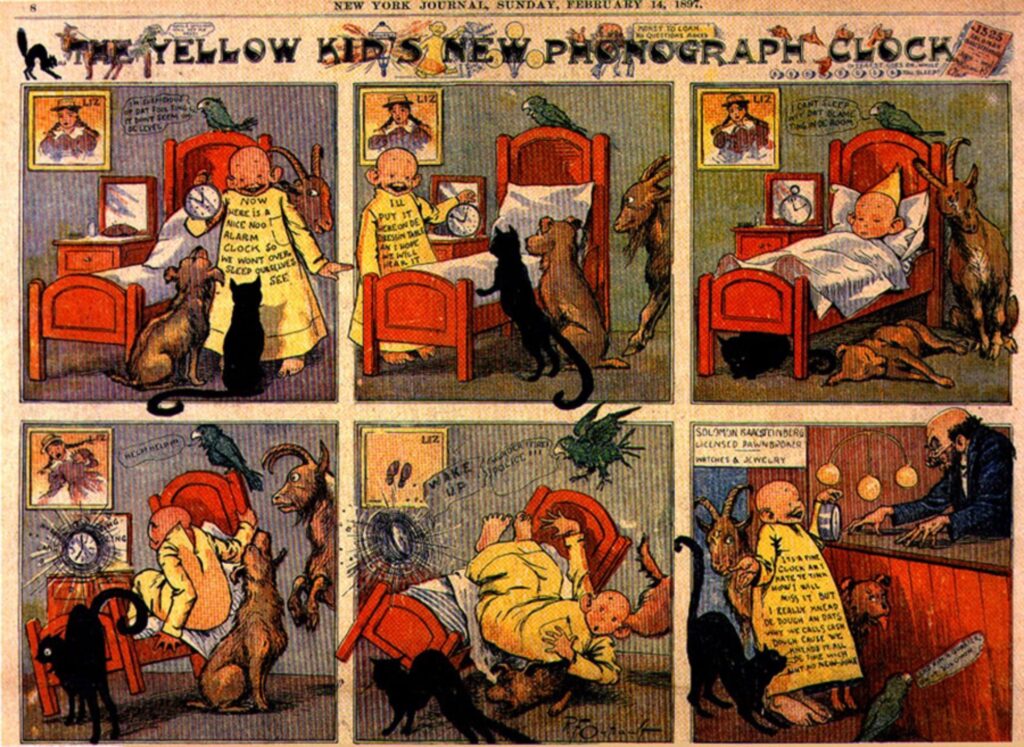The Evolution of Cartoon Art: Cartoons have been integral to human culture for centuries, evolving from simple sketches to complex animated masterpieces. This visual journey traces the fascinating evolution of cartoon art from its humble beginnings to its current status as a dominant force in entertainment and popular culture.
Cartoon art encompasses diverse styles and techniques, each reflecting its time’s cultural and technological advancements. From the earliest cave paintings to the latest digital animations, cartoons have captivated audiences with their humor, creativity, and ability to convey complex ideas in a simple and accessible format.
Early Beginnings of Cartoon Art
Origins of cartoons
Cartoons can be traced back to ancient civilizations, where rudimentary drawings communicated ideas and narratives. Early examples of cartoon-like images can be found in Egyptian hieroglyphics and Greek pottery, showcasing the timeless appeal of visual storytelling.
Development of caricatures
The art of caricature emerged during the Renaissance, as artists began exaggerating features and characteristics for comedic effect. Pioneers like Leonardo da Vinci and Albrecht Dürer experimented with caricature as a means of satire and social commentary, laying the foundation for modern cartooning.

The Golden Age of Cartoons
Rise of animated films
The early 20th century marked the golden age of cartoons, with the advent of animated films revolutionizing the entertainment industry. Innovators like Walt Disney and Max Fleischer introduced beloved characters such as Mickey Mouse and Betty Boop, captivating audiences with their whimsical adventures and imaginative storytelling.
Iconic characters and series
During this period, iconic characters and series emerged, including Looney Tunes, Tom and Jerry, and Popeye the Sailor. These timeless classics remain popular today, their enduring appeal a testament to the power of cartoon art to transcend generations.
Impact of Technology on Cartoon Art
Introduction of color
The introduction of color in the 1930s transformed the world of animation, allowing artists to create vibrant and lifelike worlds filled with rich detail and depth. Technological advancements such as Technicolor revolutionized the medium, paving the way for iconic films such as Snow White and the Seven Dwarfs and Fantasia.
Transition to digital animation
Digital animation has revolutionized how cartoons are created and consumed in recent decades. Computer-generated imagery (CGI) has enabled filmmakers to push the boundaries of visual storytelling, resulting in groundbreaking films such as Toy Story and Shrek.

Cartoons in Popular Culture
Merchandising and franchising
Cartoons have become a lucrative industry, with characters and franchises extending beyond the screen to inspire toys, games, clothing, and more. From Mickey Mouse ears to Pokémon trading cards, cartoon merchandise has become a staple of popular culture, generating billions in revenue each year.
Influence on fashion and lifestyle
Cartoons have also influenced fashion and lifestyle trends, with characters and motifs appearing on clothing, accessories, and even home décor. The iconic style of characters like Hello Kitty and SpongeBob SquarePants has become synonymous with youth culture, inspiring fashion designers and trendsetters worldwide.

Modern Trends in Cartoon Art
Diversity and representation
In recent years, there has been a growing emphasis on diversity and representation in cartoon art, with creators striving to reflect the rich tapestry of human experience. From LGBTQ+ characters to protagonists of diverse ethnic backgrounds, cartoons have become a platform for marginalized voices to be heard and celebrated.
Fusion of traditional and digital techniques
Contemporary cartoonists increasingly blend traditional hand-drawn techniques with digital tools and software, resulting in diverse artistic styles and aesthetics. This fusion of old and new allows artists to experiment with form and expression, pushing the boundaries of what is possible in cartoon art.

Evolution of Cartoon Art Styles
Classic vs. contemporary styles
Cartoon art encompasses various styles, from classic hand-drawn animation to cutting-edge CGI. While traditional techniques remain beloved by purists, contemporary artists are embracing digital mediums to create innovative and visually stunning works of art.
Experimental approaches
In addition to traditional and digital techniques, cartoonists are exploring experimental approaches to storytelling and visual expression. From abstract animations to interactive experiences, the boundaries of cartoon art continue to expand, challenging audiences to rethink their perceptions of the medium.

Cartoons as a Form of Expression
Social commentary and satire
Cartoons have long served as a vehicle for social commentary and satire, providing artists a platform to critique and challenge the status quo. From political cartoons to editorial comics, cartoonists have used humor and wit to address pressing issues and hold those in power accountable.
Addressing societal issues
In addition to satire, cartoons have been instrumental in raising awareness about important societal issues, from environmental conservation to mental health awareness. By tackling complex topics visually engagingly, cartoonists can reach audiences of all ages and backgrounds, sparking meaningful conversations and inspiring positive change.

Cartoon Art in Education
Utilization in teaching and learning
Cartoons are increasingly used in educational settings to engage students and enhance learning outcomes. From animated documentaries to interactive tutorials, cartoons can simplify complex concepts and make learning fun and accessible for learners of all ages.
Encouraging creativity in children
Cartoons play a vital role in stimulating creativity and imagination in children, encouraging them to explore new ideas and express themselves through art. Cartoons can inspire the next generation of artists and innovators by providing a safe and supportive environment for experimentation and self-expression.

Challenges and Controversies
Censorship and regulation
Despite their widespread popularity, cartoons have often faced censorship and regulation due to their potential to influence and shape public opinion. Controversial topics such as violence, sexuality, and religious imagery have sparked debates about the appropriate boundaries of artistic expression and freedom of speech.
Stereotyping and cultural sensitivity
Cartoons have also been criticized for perpetuating stereotypes and promoting harmful narratives, particularly in their portrayal of marginalized communities. From racial caricatures to gender stereotypes, cartoonists must navigate a delicate balance between creative freedom and cultural sensitivity, ensuring that their work reflects diverse perspectives and experiences.
Future Directions of Cartoon Art
Potential innovations
The future of cartoon art holds endless possibilities, with advancements in technology and storytelling poised to revolutionize the medium once again. From virtual reality experiences to interactive narratives, cartoonists are embracing new tools and platforms to push the boundaries of creativity and storytelling.
Continued relevance in media
Cartoons remain a beloved and enduring artistic expression despite the ever-changing entertainment and media landscape. Whether enjoyed on the big screen or streamed on digital platforms, cartoons continue to captivate audiences with their timeless charm and universal appeal, ensuring their continued relevance in the years to come.

In Conclusion, The evolution of cartoon art is a testament to the power of creativity and imagination to transcend time and culture. From humble beginnings to global phenomenon, cartoons have captivated audiences with their humor, wit, and ability to inspire and entertain generations of viewers. As we look to the future, the legacy of cartoon art continues to shine brightly, reminding us of the enduring power of visual storytelling.
FAQs about The Evolution of Cartoon Art: A Visual Journey
What is the earliest known example of cartoon art?
The earliest examples of cartoon-like images can be found in ancient civilizations such as Egypt and Greece, where rudimentary drawings communicated ideas and narratives.
How has technology impacted the evolution of cartoon art?
Technology has played a significant role in the evolution of cartoon art, from the introduction of color in the 1930s to the rise of digital animation in recent decades. These advancements have revolutionized the way cartoons are created and consumed, allowing artists to push the boundaries of visual storytelling.
What role do cartoons play in popular culture?
Cartoons have become dominant in popular culture, inspiring fashion trends, merchandise, and theme parks. Iconic characters and franchises have transcended the screen to become cultural phenomena, influencing countless aspects of daily life.
How do cartoons address societal issues?
Cartoons have raised awareness about important societal issues, from environmental conservation to mental health awareness. By tackling complex topics in a visually engaging format, cartoons can reach audiences of all ages and backgrounds, sparking meaningful conversations and inspiring positive change.
What does the future hold for cartoon art?
The future of cartoon art holds endless possibilities, with advancements in technology and storytelling poised to revolutionize the medium once again. From virtual reality experiences to interactive narratives, cartoonists are embracing new tools and platforms to push the boundaries of creativity and storytelling.
This post was created with our nice and easy submission form. Create your post!



